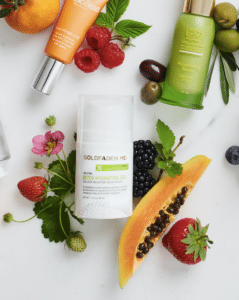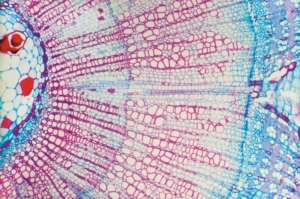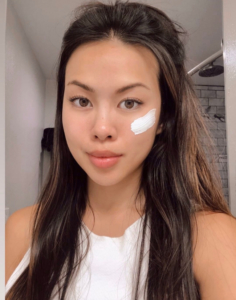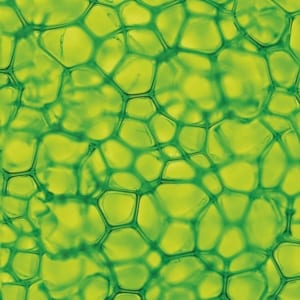Spring is here, summer is on its way, and it is the perfect time to take extra care of our skin and prep for that desired summer glow. Healthy and glowing skin starts from within through exercise, a healthy diet, proper sleep, and there are also multiple things that you can do for your skin topically to keep it looking fresh and youthful-looking. With skincare, consistency is key so implementing healthy habits into your daily routine is the best way to reach your skin goals.
We enlisted Dr. G to give us the tips on how to maintain my soft, healthy, and glowing skin from the inside out.
 What level SPF do you recommend patients to wear every single day, and why?
What level SPF do you recommend patients to wear every single day, and why?
The protection is all factored on the time spent in the sun. SPF, short for “Sun Protection Factor” primarily measures UVB protection. When one wears an SPF 30 for example, you could stay out in direct sunlight for 30 times longer before UVA/UVB damage occurs than a person with no sunscreen. This is how SPF factor’s are designated. However, this is dependent on the individual’s skin. The key to proper sun protection is the reapplication throughout the day. There is NO one miracle sunscreen that covers and protects you completely throughout the day. Everyone should be wearing an SPF 30 daily. When outdoors in direct sun or swimming reapplication is crucial.
A physical sunscreen is always better in my opinion than a chemical one. Chemical sunscreens, due to the nature of having to be absorbed into the skin, can interact and cause irritation rashes or clogged pores. Another downside to a chemical sunscreen is that the sun has to actually touch and reach the skin, whereas a physical sunscreen is blocking the UV rays from ever touching the skin.
A physical sunscreen contains physical blocking ingredients such as Zinc or Titanium oxide. Both of these ingredients sit on the surface of the skin creating a protective barrier from UVA and UVB rays. They are white in color and work immediately on application. Another type of Physical block can be clothing.
What are some of the best types of food to eat for healthy skin, and what are the benefits of each?
Eating fried foods, processed foods and sugar can wreak havoc on your skin causing puffiness, redness, blemishes, blotchiness, and in all cases Glycation. The Glycation process is sugar (from food and alcohol) breaking down the collagen fibers in the skin and speeding up the aging process – think premature wrinkles and loss of elasticity. Eating ‘superfoods’ will benefit the internal health as well as the external glow.
Salmon: rich in Omega-3 fatty acids is none of the most beneficial due to its ability to greatly reduce inflammation and dryness and increase circulation – a key attribute to healthy, youthful-looking skin.
Fermented foods: Think kimchee, sauerkraut or pickled vegetables. These foods contain probiotics which help keep the gut healthy. A healthy gut helps the digestive system and immune system. Probiotics have been shown to help with skin issues such as eczema, rosacea, acne and aging skin.
Foods rich in antioxidants: Leafy green blueberries, blackberries, avocado, broccoli, nuts. These all contain high levels of antioxidants which are crucial for overall help and fighting off free radical damage.
 Does eating ‘healthy fats’ really have an impact on skin health, why or why not? What are some of the best food sources of these healthy fats?
Does eating ‘healthy fats’ really have an impact on skin health, why or why not? What are some of the best food sources of these healthy fats?
YES. Eating foods rich in Omega-3 fatty acids like salmon, avocado and almonds can greatly reduce inflammation, reduce dryness and increase circulation – a key attribute to healthy, youthful-looking skin.
In general, if you had to pick, what are the top ingredients to use for healthy, glowing skin?
The best thing you can do for your skin is exfoliate. As humans age the rate of skin cell turnover slows down dramatically. Dead cells on the skin’s surface hang around much longer, a fact that tends to accentuate those fine lines and make your complexion look dull and lifeless. By removing these dead skin cells, exfoliation helps make up for the gradual slowing down of the natural skin renewal process, improving the tone and texture of the skin. Removing dead and damaged skin cells on the surface allows the fresh new skin underneath to become visible. This newly exposed layer of skin feels much softer and smoother. Its surface reflects light better, making fine lines and other small imperfections harder to see. Age spots and other areas of unwanted pigmentation are less noticeable because the dead skin cells containing the pigment have been removed. Exfoliation unplugs clogged pores and allows for the release of natural skin oils. Regular exfoliation also helps to maintain open pores, decreases pore size, and minimizes many types of superficial scarring. In addition, removing the top layer of dead and damaged cells allows other health-promoting agents such as moisturizers, antioxidants, and collagen-boosting ingredients to better penetrate the skin and work more effectively.
One of the benefits of Doctor’s Scrub is that it delivers our signature ‘Goldfaden Glow’. Ruby Crystals are used because they are perfectly round and have no jagged edges, which can cause irritation or broken capillaries. Targeted hydrating emollients Hyaluronic Acid, Jojoba Oil and Apricot Kernel oil are incorporated to hydrate and nourish the skin.
Vitamin C:
Vitamin C has the ability to revitalize aging skin due to its ability to stimulate collagen production in the skin while also helping to block the enzymes that break down collagen.
Red Tea:
One of the most important existing antioxidants is Red Tea or Rooibos which contains some of the most potent natural antioxidants known for protecting your skin from the free radical damage that can cause aging. These include vitamins C, E and beta-carotene. Red tea is known to possess 50 times the antioxidant capacity of green tea due to a high concentration of a special enzyme called superoxide dismutase (SOD for short), a major scavenger of free radicals. The combination of these natural vitamins and enzymes found in red tea aids in promoting new skin health after the removal of dead and damaged cells, giving your skin a smoother, brighter, and healthier appearance. In addition, red tea also contains a number of powerful polyphenols and flavonoids that help heal and rejuvenate the skin.
Aspalathin (found only in red tea) and nothofagin, are two main flavonoids that can help strengthen your capillary walls by decreasing the permeability and fragility of veins and lymph vessels. Flavonoids also have strong anti-bacterial and anti-inflammatory properties. In addition, the alpha hydroxy acid found in African red tea gently stimulates healthy cell turnover, leaving your skin noticeably softer and smoother. Red tea also contains zinc which helps heal and cleanse impurities while delivering calming and soothing benefits to the skin. Regular and continued use of red tea with its antioxidant, antibacterial, and anti-inflammatory properties will visibly improve skin clarity, brightness, tone and texture. Red tea helps reduce the appearance of many types of skin imperfections, including fine lines, acne scars, and dark spots, resulting in younger, healthier-looking skin.
Hyaluronic Acid:
The volumizing effect it has on the skin adds vital fullness that can minimize facial wrinkles, plump up thin skin and maintain proper moisture levels by preventing dehydration in the skin. Our favorite obsession is our Needle-less product (say goodbye to fine lines, naturally).
How much water should we be drinking?
Your skin is made up of about 65% water (it’s the largest organ of the body), which means that you need to be hydrating your body all throughout the day. I’m sure you’ve heard this way too much, but drink lots of water! Most people are not consuming enough water every day (8-10 glasses on average), but water is a necessary nutrient for healthy, glowy skin. Make sure that you are not allowing yourself to get dehydrated and drink multiple glasses throughout your day. Fill up a large water bottle or fill up your favorite glass many times, and drink that water! Your complexion will show!
What are some tools that we can be using at home?
Dry brushing your body is a great way to stimulate your lymphatic system and drain waste to smooth the skin. The mechanical action of dry brushing is wonderful for exfoliating dry winter skin. It also helps detoxify by increasing blood circulation and promoting lymph flow/drainage. Dry brushing unclogs pores in the exfoliation process. It also stimulates your nervous system, which can make you feel invigorated afterward. It’s also excellent for exfoliation by sweeping away dry patches of skin, and can even smooth cellulite. Our favorite is Goop dry brush!

 Hormones:
Hormones: What products/ingredients would you recommend to combat this?
What products/ingredients would you recommend to combat this?